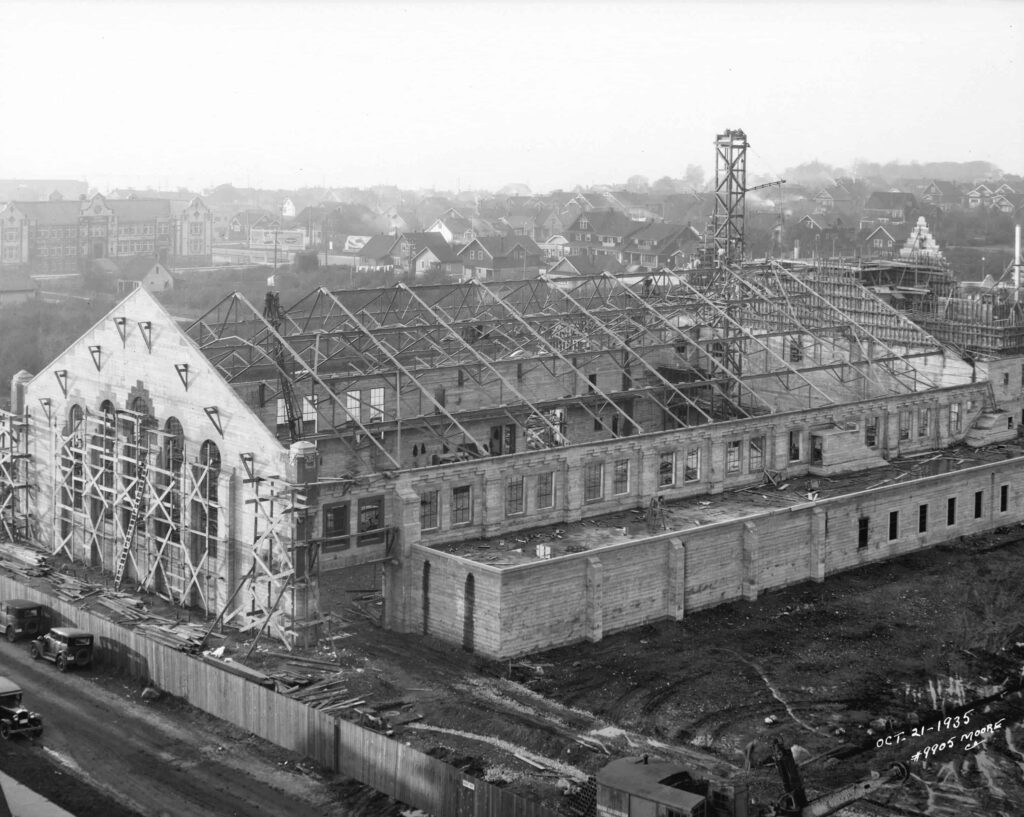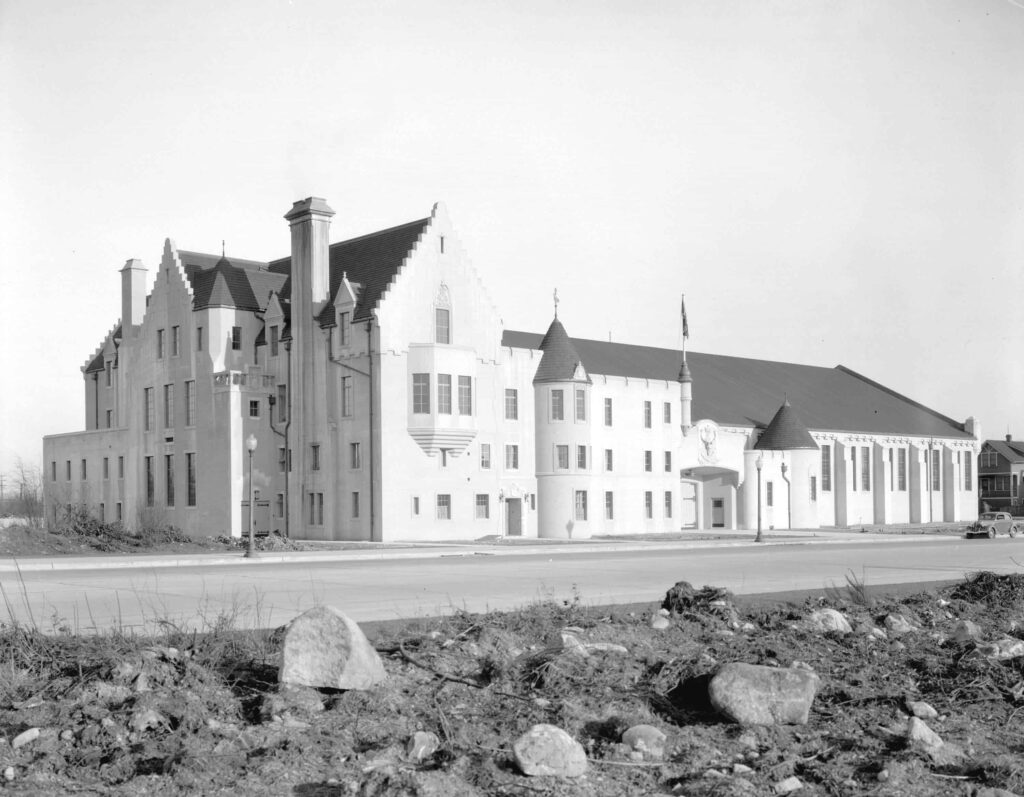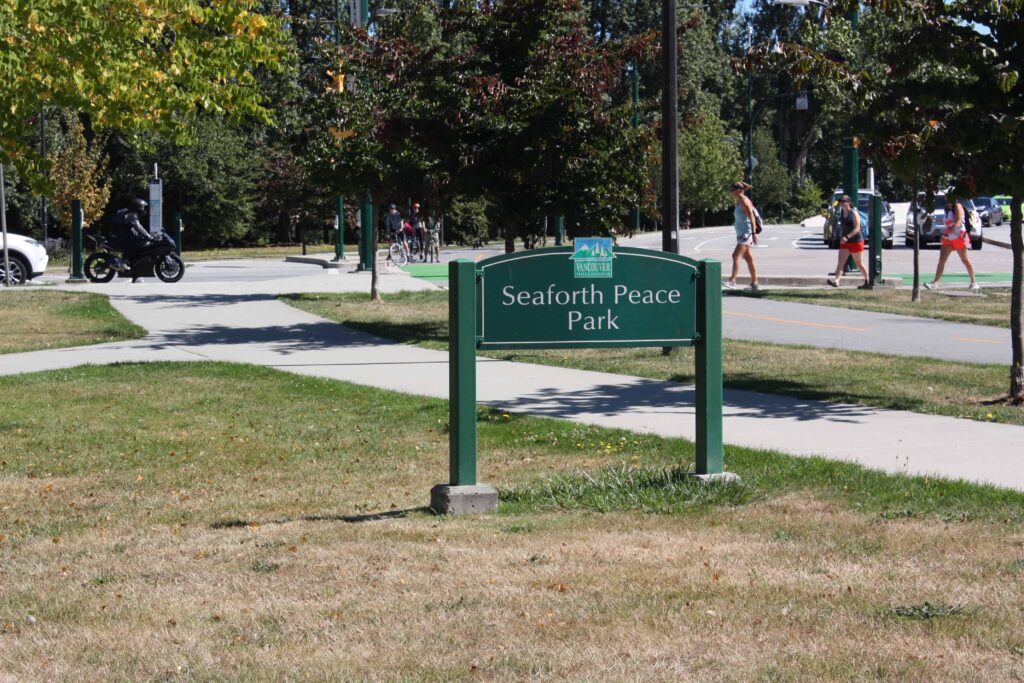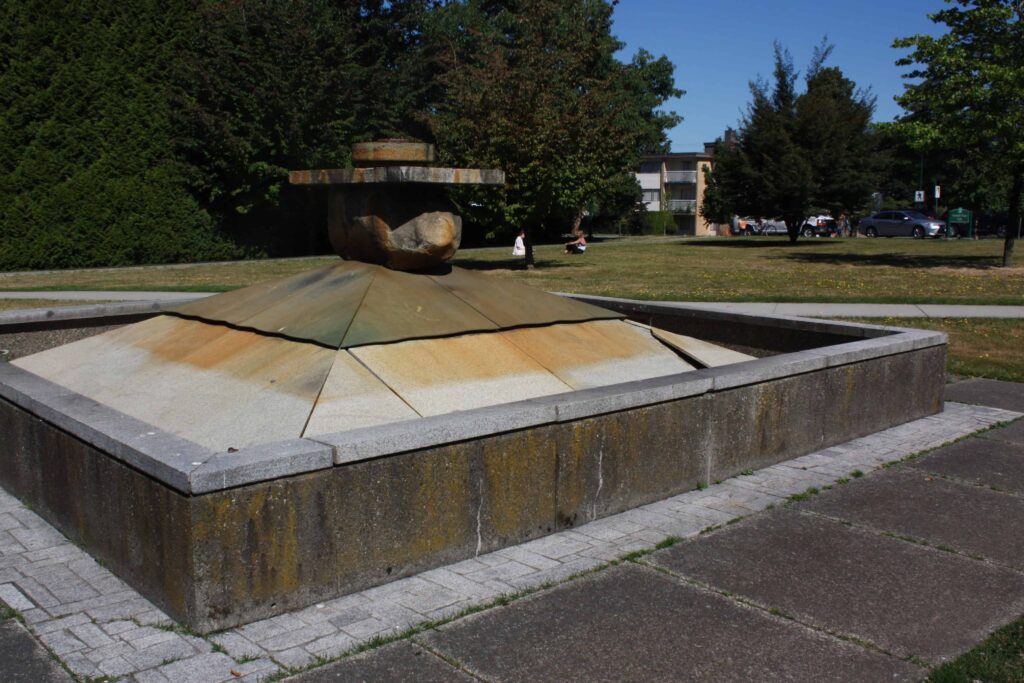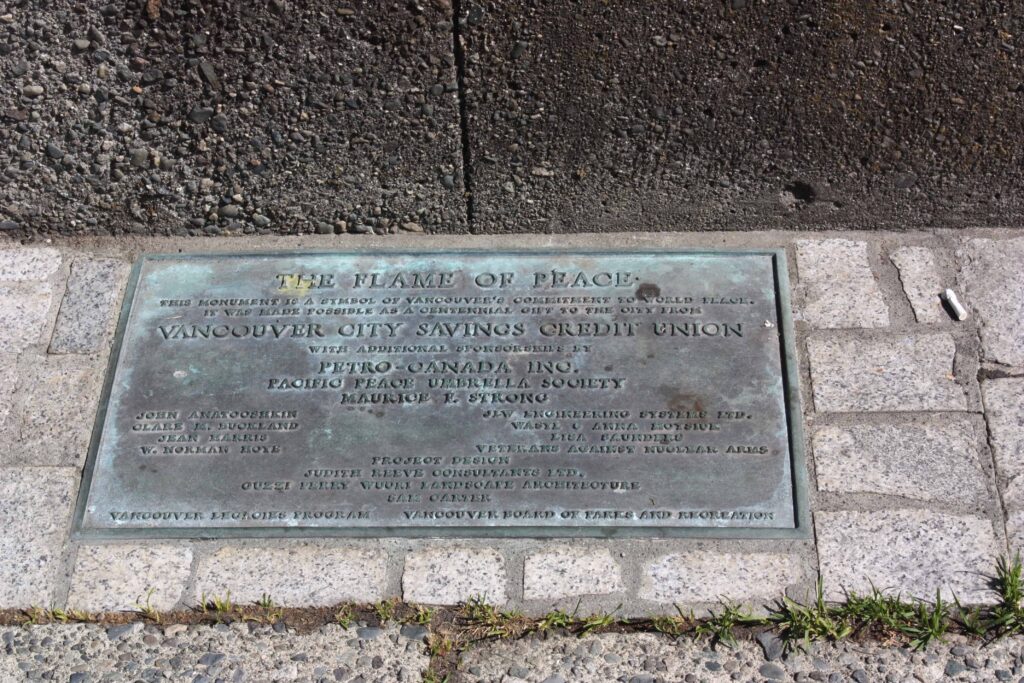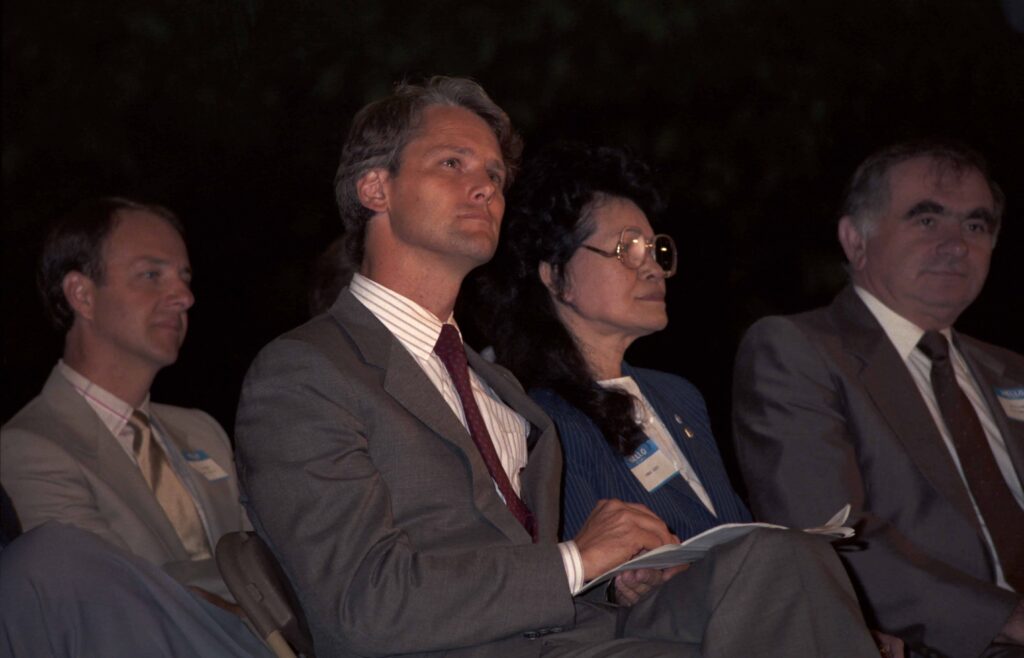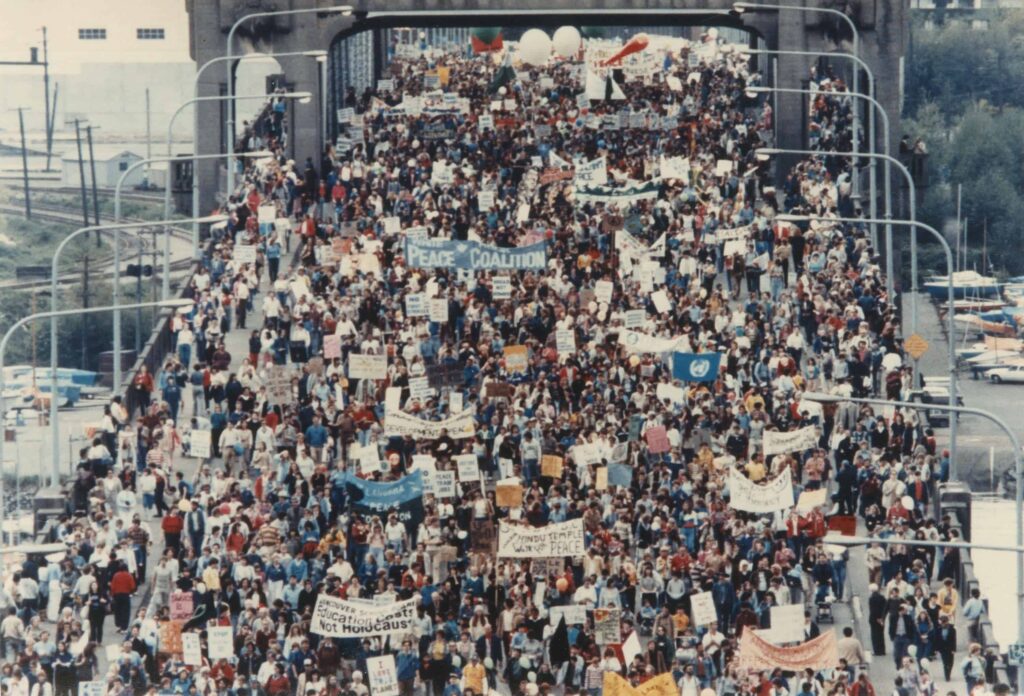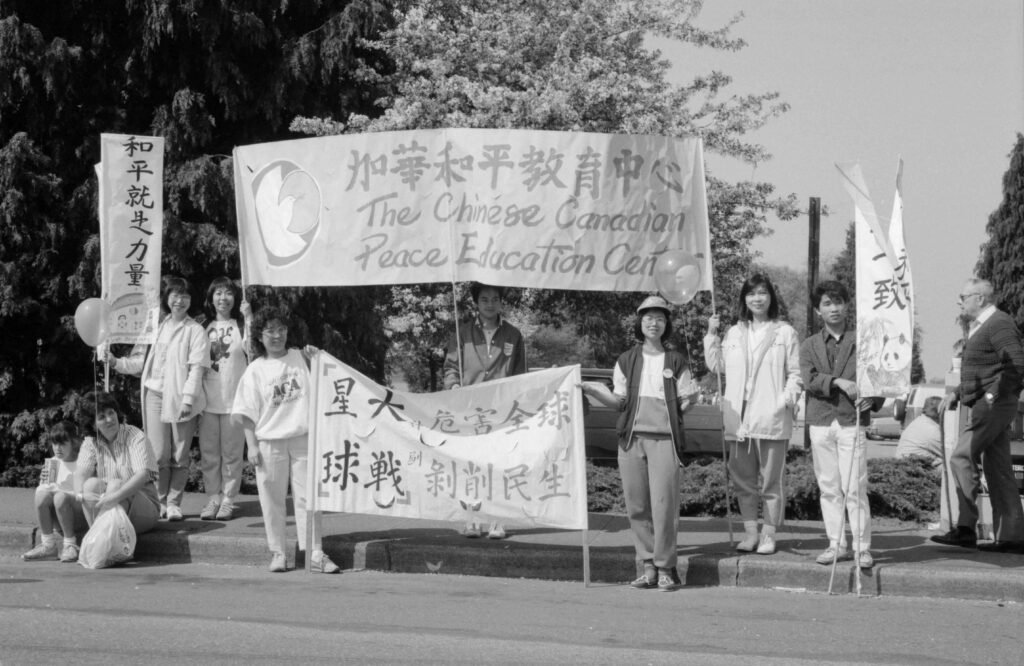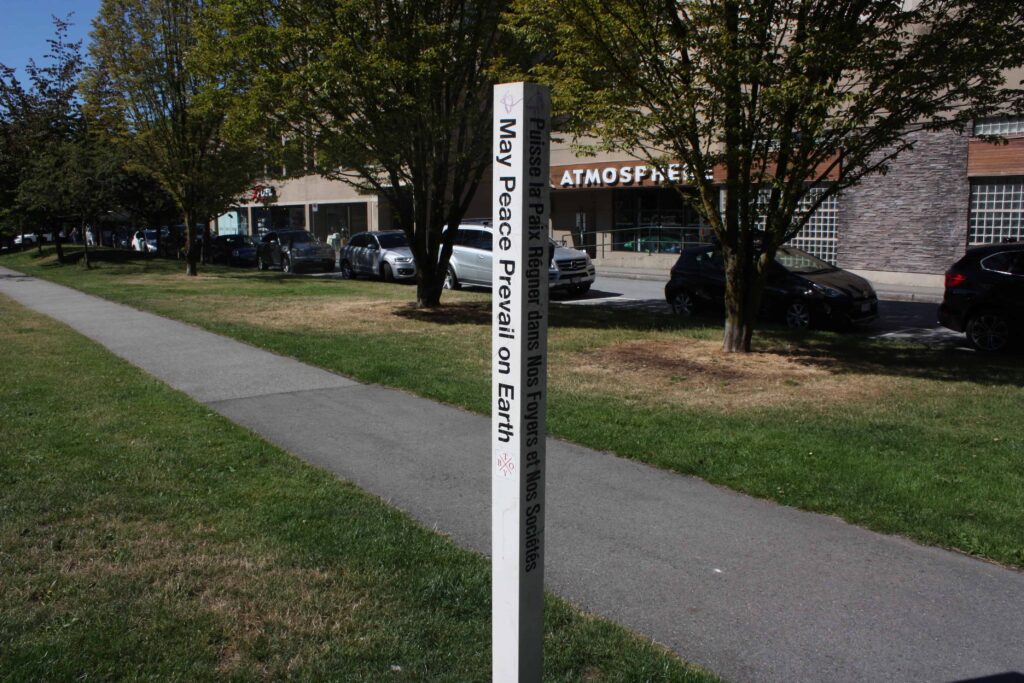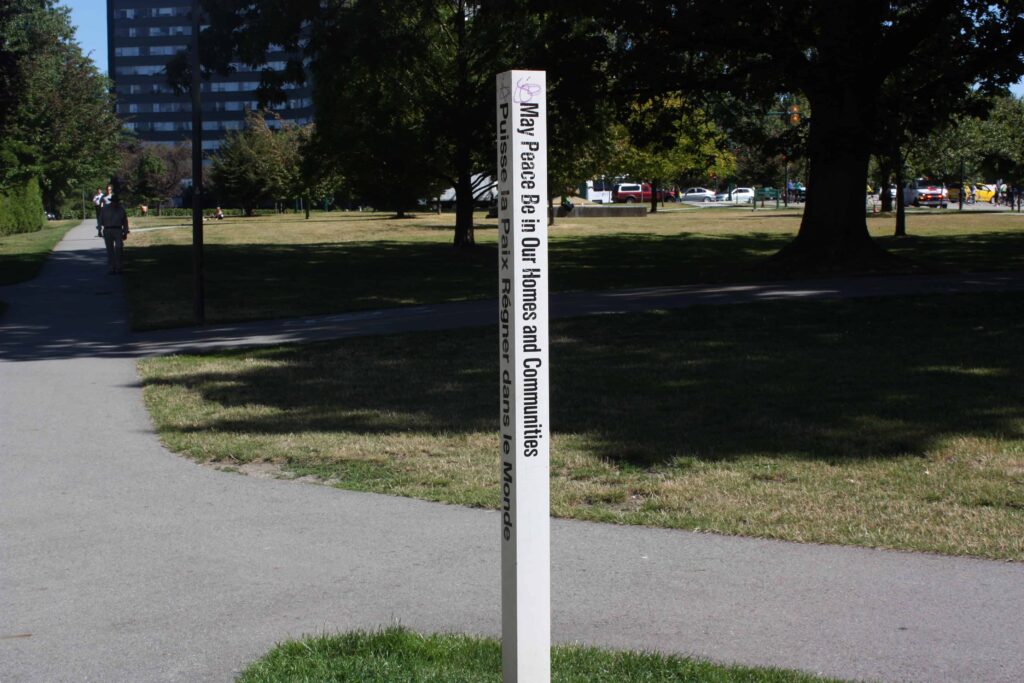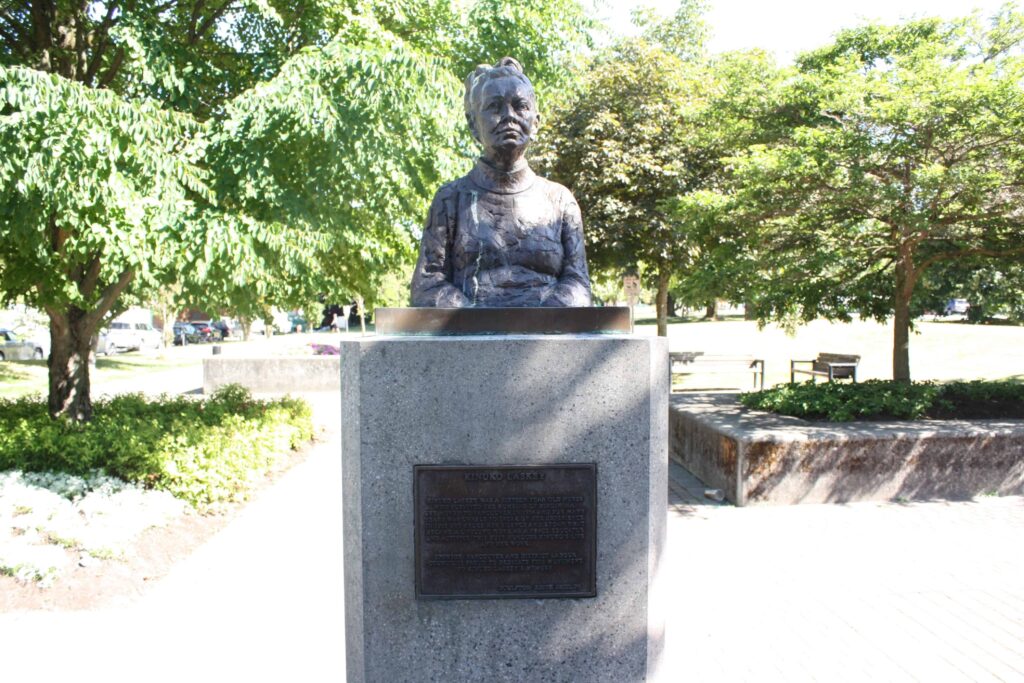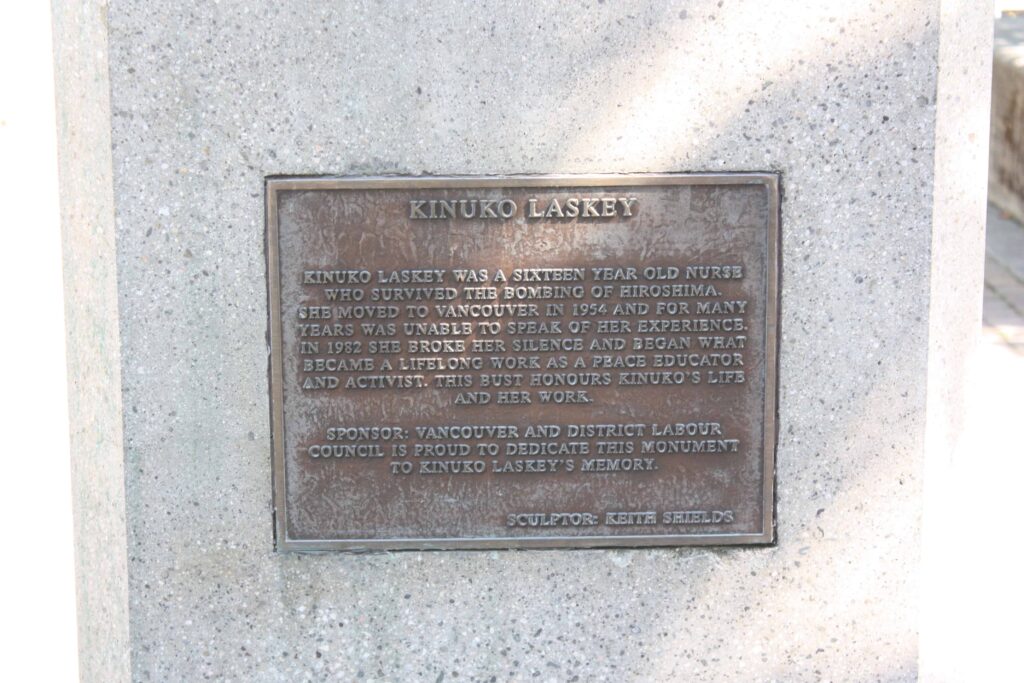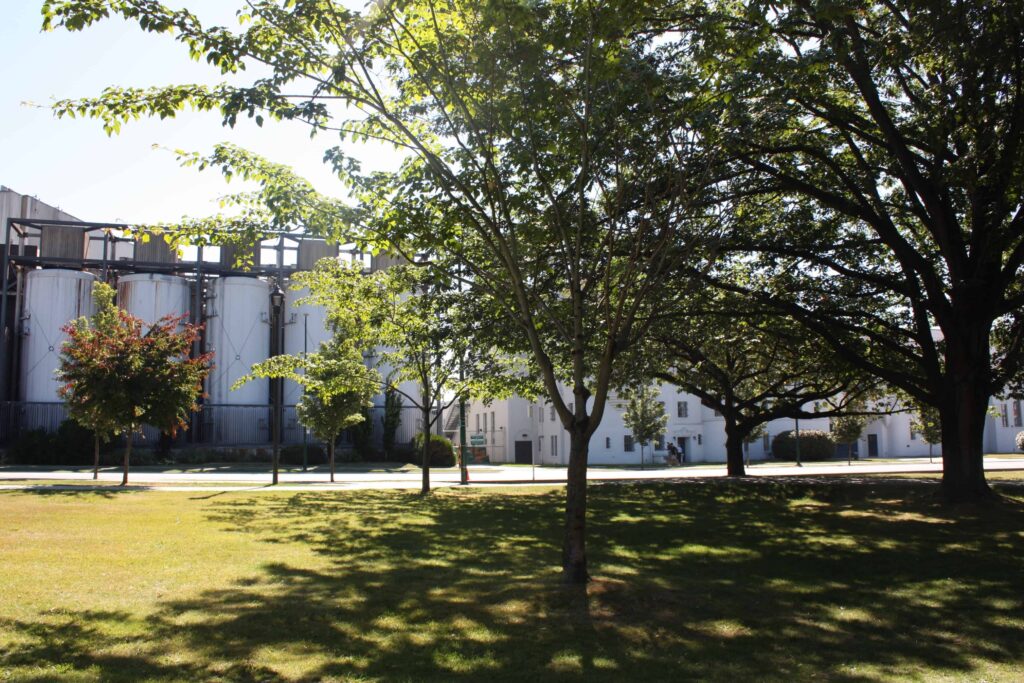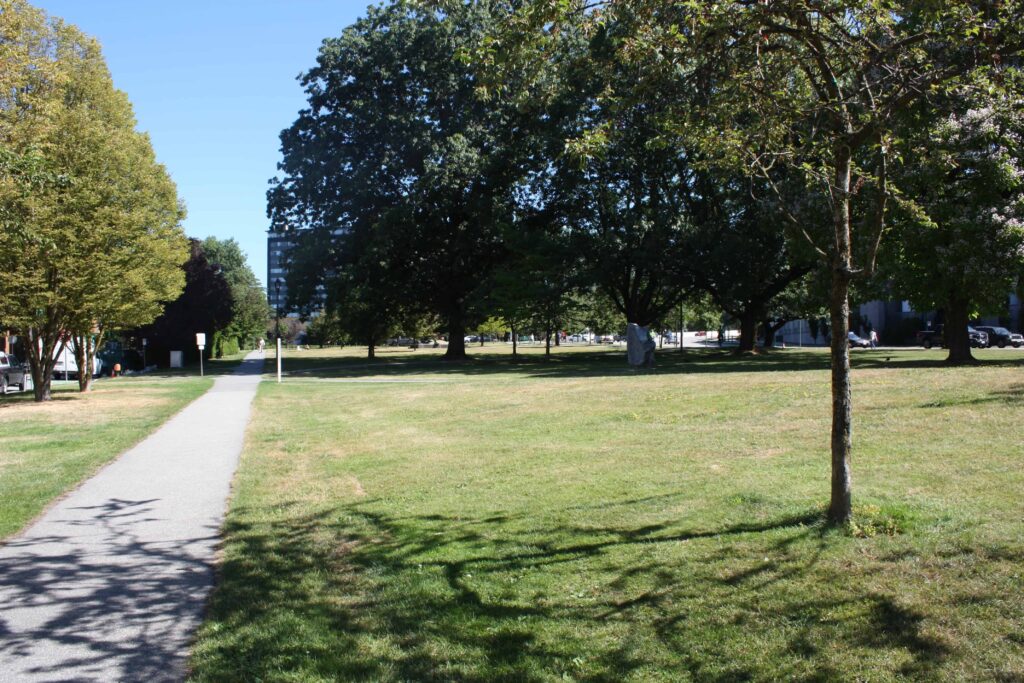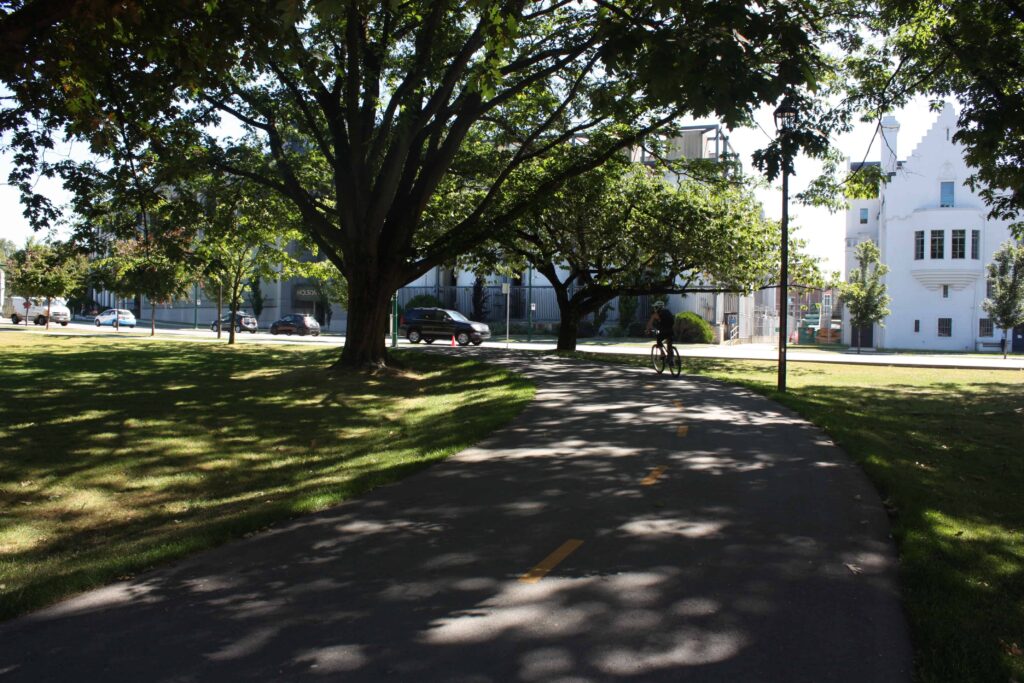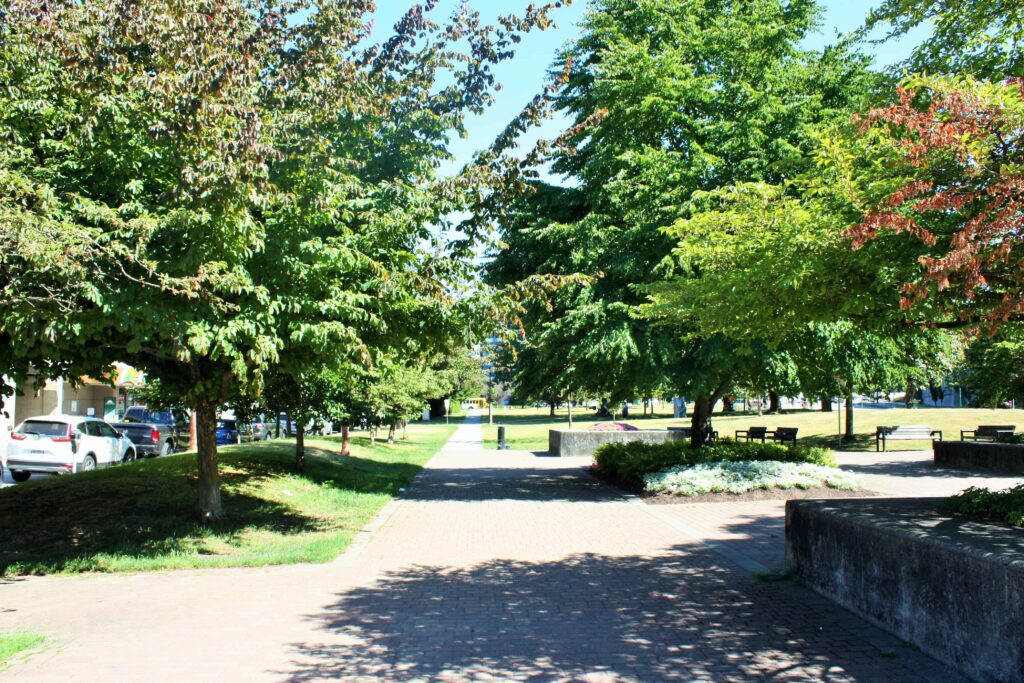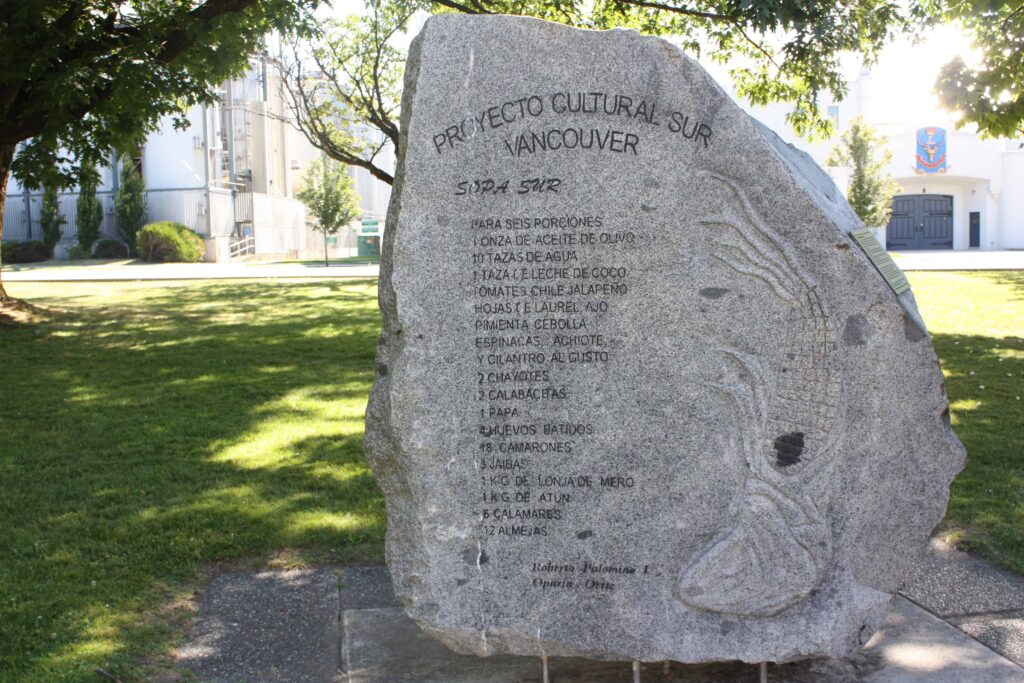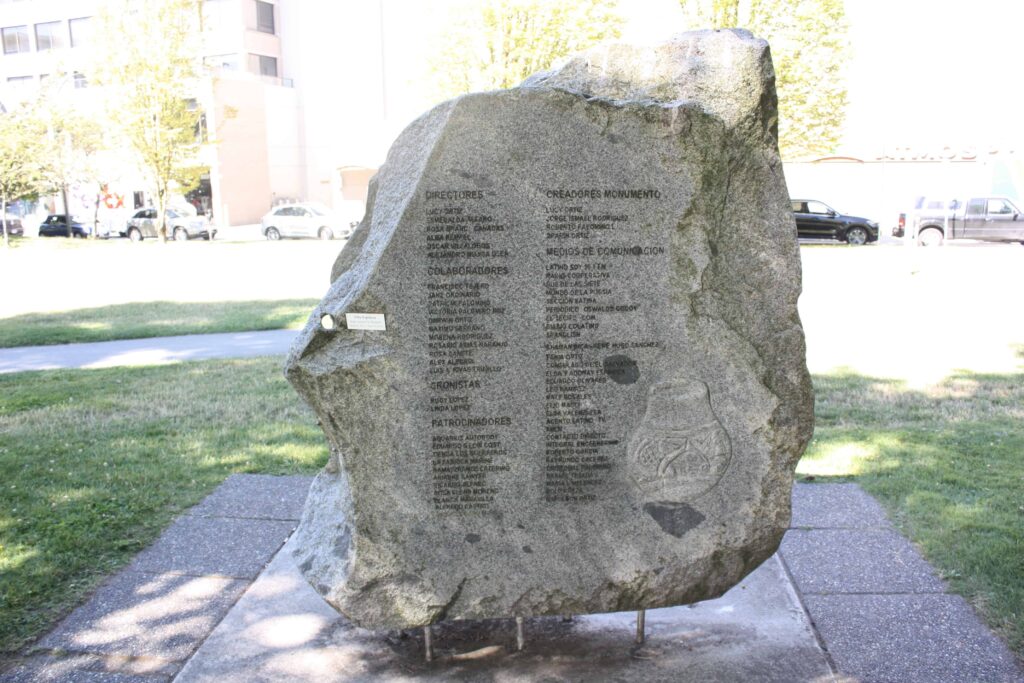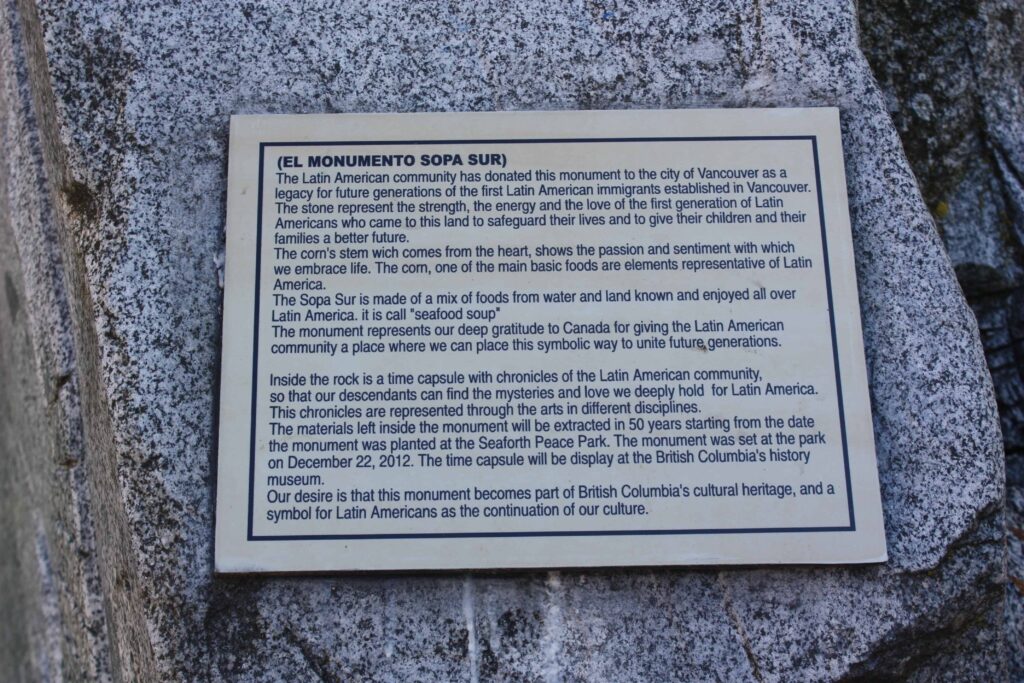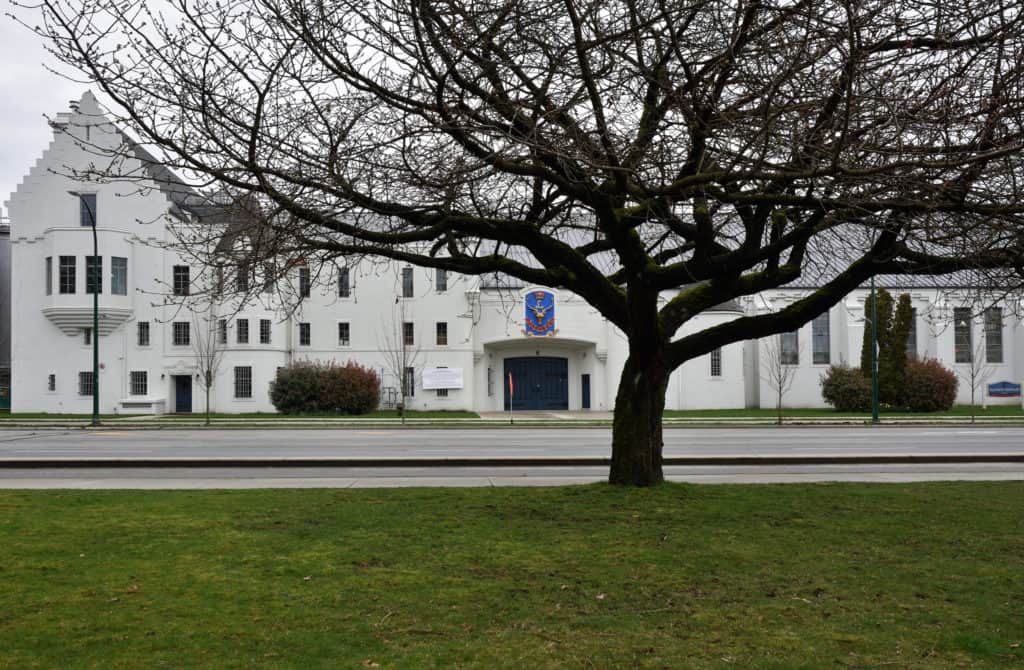Before the Park
Seaforth Peace Park is part of traditional territory of the Coast Salish Peoples, and from 1869 until the late 1940s, the land made up the southwest corner of the Kitsilano Indian Reserve, with the village of Sen̓áḵw (Sḵwx̱wú7mesh, Squamish language) or sən̓aʔqʷ (hən̓q̓əmin̓əm̓, Musqueam language) just a short walk away. From the 1920s, the land was being considered for a park, and by 1949 it had been created. It was named Seaforth Park, after the Seaforth Highlanders and their armoury which had been completed in 1936 across Burrard Street.
Peace Marches
Since the 1980s, Seaforth Park has been associated with peace. The 1980s and 1990s were the era of huge peace marches in Vancouver, coordinated by the group End The Arms Race. The 1981 march drew about 100,000 people, and numbers stayed large for subsequent annual marches for several years, paralleling the Cold War tensions of the time. Participants marched from Kitsilano Beach across the Burrard Bridge to the West End. Frank Kennedy from the Vancouver and District Labour Council was the principal organizer in the early years; Peter Coombes became the organizer in the late 1980s.
A Peace Park
In 1986, a memorial fountain was erected at Seaforth Park to commemorate the bombing of Hiroshima; Artist Sam Carter made “The Flame of Peace,” a bronze cauldron filled with water containing an eternal flame, which rests on a slab of granite. At the unveiling ceremony it was lit by Hiroshima bombing survivor Kinuko Laskey (see the archival video recording of the lighting of the flame ceremony). In October 1988, Vancouver hosted the International Institute For Peace Through Tourism’s (IIPT) First Global Conference, and a Peace Tree Planting Ceremony was held on the first day of the conference at the park.
Seaforth Park was renamed Seaforth Peace Park in 1992, as part of a Canada-wide dedication of 400 Peace Parks. The idea for Peace Parks Across Canada was conceived by IIPT at the First Global Conference in Vancouver, and in partnership with Canada 125, the National Capital Commissions, and with support from many community groups and sponsors. Seaforths Park’s prior associations with IIPT, and with the idea of peace in general, made it the perfect place to rededicate as a Peace Park for this project, which took place during a ceremony at noon on October 8th that year.
Each Peace Park Across Canada included a Peace Grove of twelve trees, which symbolized the parks’ connection to each other, to nature, and the ten provinces and two territories (Nunavut did not become a territory until 1999). School children planted twelve Katsura trees, donated by the Rotary Club of Vancouver, at the southern end of Seaforth Peace Park as part of the ceremony. In 2008, many Peace Parks in Canada participated in a 15 year anniversary re-dedication ceremony, which included planting a thirteenth tree to represent Nunavut.
(Here’s a list of cities and towns across Canada with Peace Parks)
Seaforth Peace Park in the 2000s
Artist Keith Shields donated a sculpture of Kinuko Laskey in 2009, a woman who survived the the bombing of Hirsohima, and moved to Vancouver in 1954, later dedicating her life to work as a peace educator and activist. 2012 also included welcoming a monument to the park: The Latin American community set down a monument dedicated to the first generation Latin Americans in Vancouver, and inside is a time capsule to be opened in 2063.
In 2013 the City of Vancouver began construction on bike lanes in the area, including a lane on the west side of Burrard Street and a connecting path cutting through the middle of Seaforth Peace Park, which were in danger of affecting the park’s historic Tai Haku and Hosokawa-nioi cherry trees. After the Vancouver Park Board raised concerns, the bike lane plans were adjusted so that no cherry trees had to be removed.
The REDress project, started in 2014 by Metis artist Jaime Black, was exhibited in Seaforth Peace Park in 2016 and 2017. Red dresses were hung from trees in the park, representing the over 1000 missing and murdered indigenous women across Canada, and ceremonies were held on October 4th, the National Day for Vigils for Missing and Murdered Indigenous Women. The park has also been the site of memorials for those who have died as part of war and conflict over the years, and recognizes the valour in both World Wars of the Seaforth Highlanders, whose armoury is on the opposite side of Burrard Street.
Nearby Places That Matter:
Sources:



